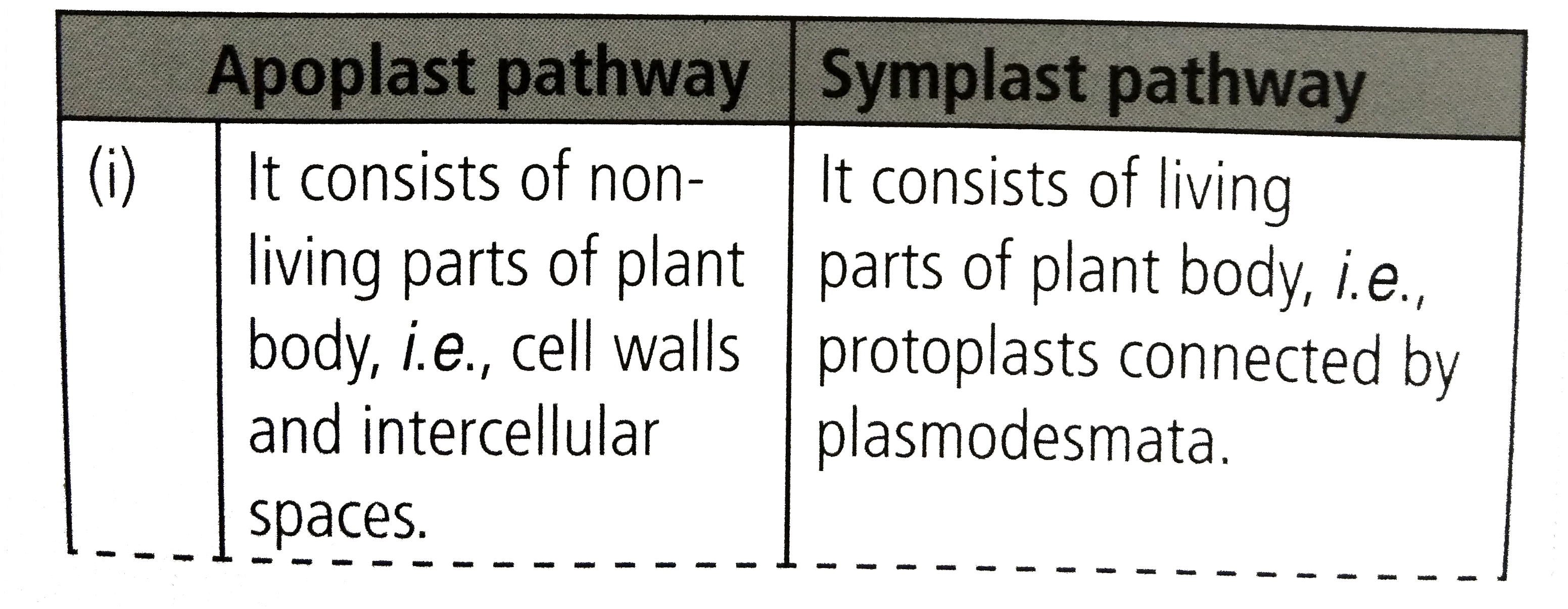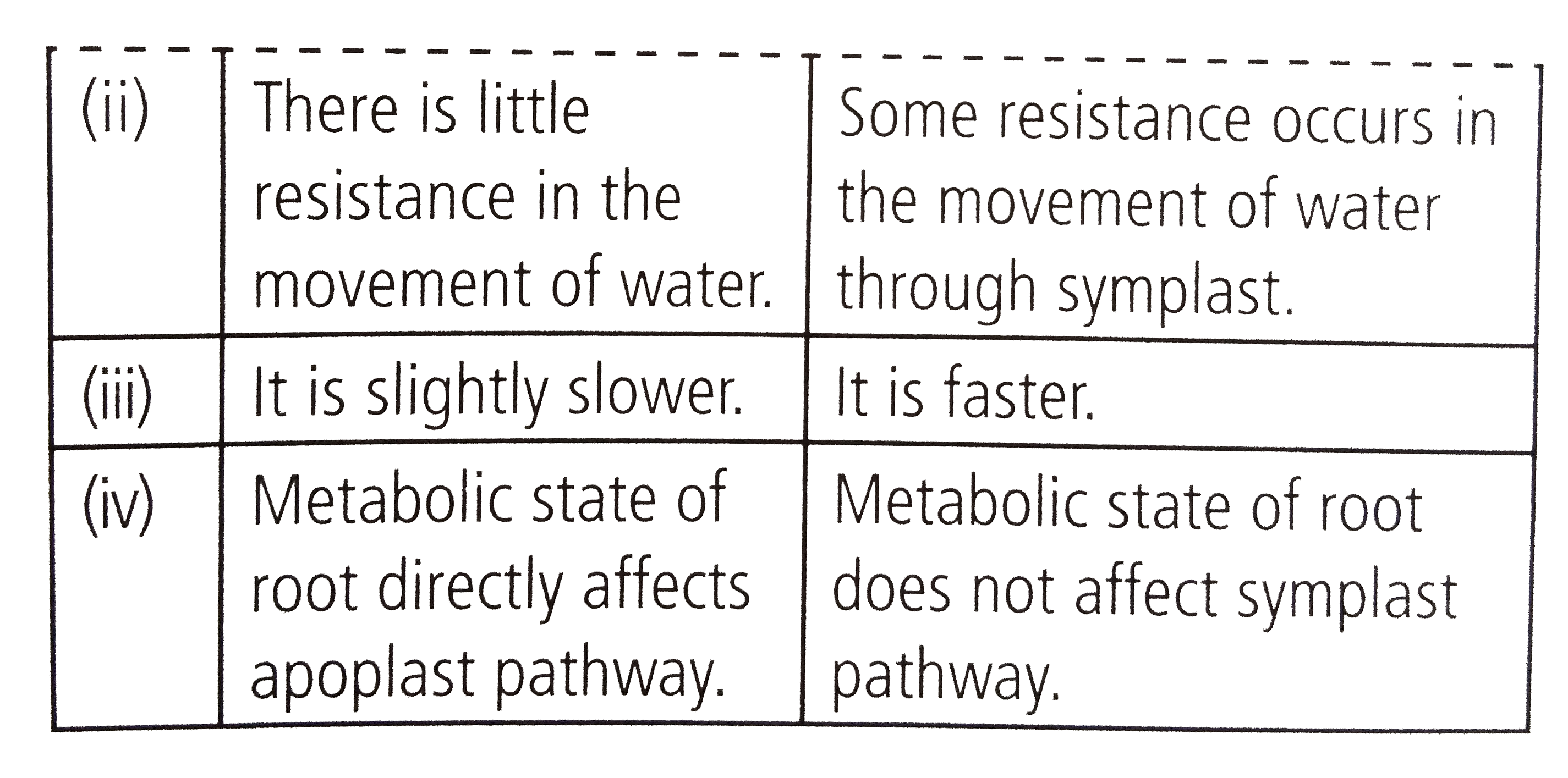What is symplast pathway?
Step-by-Step Solution:
1. Definition of Symplast Pathway: The symplast pathway refers to the movement of water and dissolved substances through the cytoplasm of adjacent plant cells. This pathway is interconnected via plasmodesmata, which are microscopic channels that connect the cytoplasm of neighboring cells.
2. Comparison with Apoplast Pathway: Unlike the apoplast pathway, which involves the movement of substances through the cell walls and intercellular spaces, the symplast pathway specifically involves the cytoplasm of the cells. This means that the symplast pathway does not involve any movement through the cell wall.
3. Process of Water Movement: Water absorption begins at the root hairs, which are specialized structures that increase the surface area for absorption. From the root hairs, water moves into the epidermis, then through the cortex, and reaches the endodermis.
4. Pathway to Xylem: After passing through the endodermis, the water continues to the pericycle and finally enters the xylem. The xylem is responsible for transporting water and nutrients to the aerial parts of the plant, such as stems and leaves.
5. Importance of Symplast Pathway: The symplast pathway is crucial for the distribution of water and nutrients throughout the plant. It allows for efficient transport and communication between cells, contributing to the overall health and functioning of the plant.
Topper's Solved these Questions
- BOOK - ICSECHAPTER - TRANSPORT IN PLANTS EXERCISE - REVIEW QUESTIONS (Short answer type questions)25videos
TRANSPORT IN PLANTS
- BOOK - ICSECHAPTER - TRANSPORT IN PLANTS EXERCISE - REVIEW QUESTIONS (Long answer type questions)16videos
TRANSPORT IN PLANTS
- BOOK - ICSECHAPTER - TRANSPORT IN PLANTS EXERCISE - REVIEW QUESTIONS (Differentiate between the following)12videos
TRANSPORT IN PLANTS
- BOOK - ICSECHAPTER - THE LIVING WORLD EXERCISE - Ncert Exercises (Differentiate Between )4videos
THE LIVING WORLD
Similar Questions
Knowledge Check
- Question 1 - Select One
Following are the differences between apoplast pathway and symplast pathway.

 A(iii)onlyB(i)and(iii)onlyC(iii)and(iv)onlyD(ii)and(iii)only
A(iii)onlyB(i)and(iii)onlyC(iii)and(iv)onlyD(ii)and(iii)only
Apoplast and Symplast pathway
View SolutionDraw a labelled diagram showing apoplastic and symplastic pathways of water transport in plants.
View SolutionSelect the wrong statement w.r.t. symplastic pathway of water.
View SolutionWhat are the main pathways for the entry of allergens?
View SolutionSelect incorrect for apoplastic system of pathways.
View SolutionWhich of the following obstructs apolastic pathway of water in roots?
View SolutionMovement of ions into symplast area of a plant cell
View Solution

